[The List] Your Dream Drive made real
Reader Howard Chick has a thing for handmade British cars, so we put him behind the wheel of an Alvis TD21
Words ANDREW NOAKES Photography DAN SHERWOOD
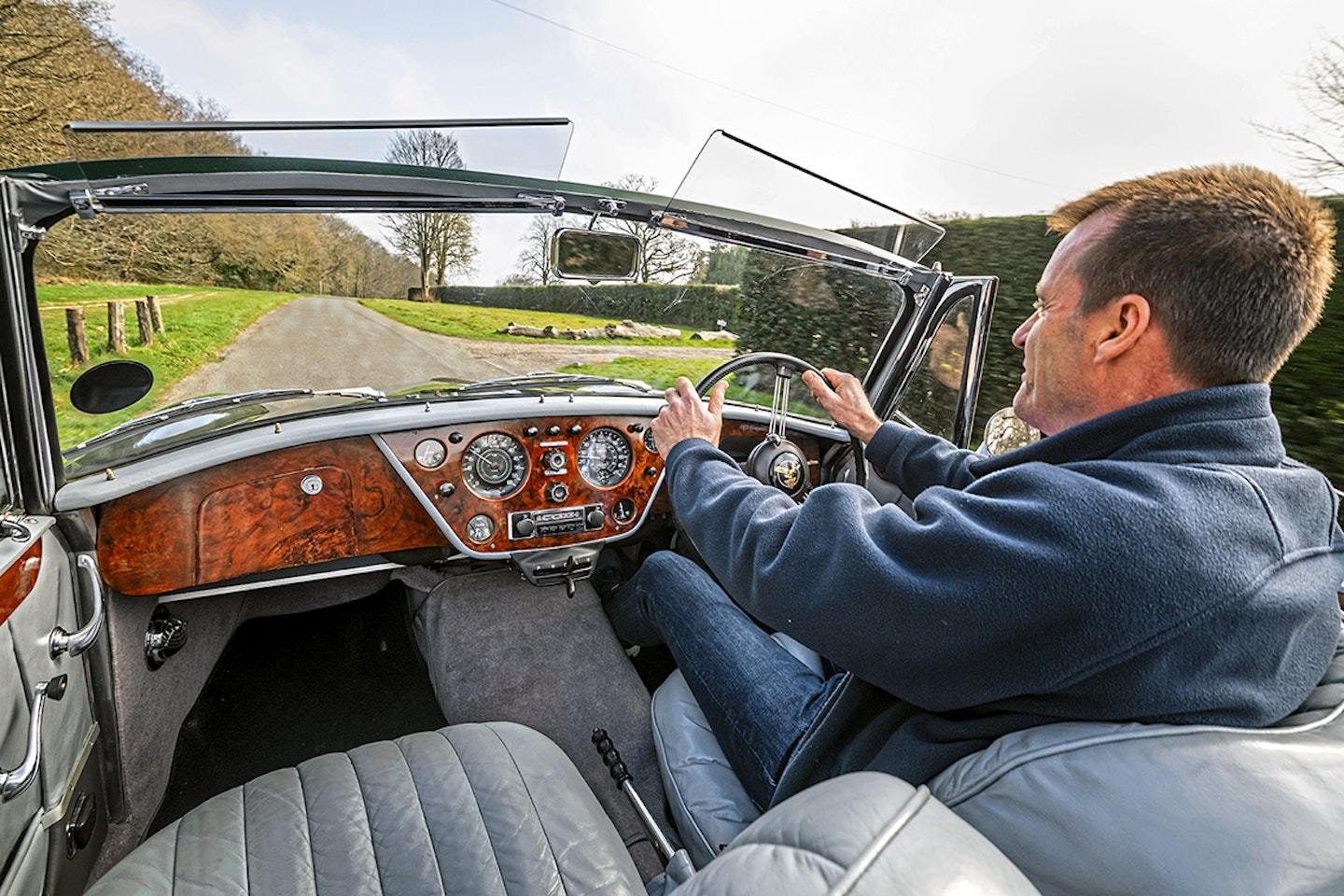
Glints of chrome in the distance herald the arrival of a classic Sixties shape: a 1962 Alvis TD21 drophead coupé in a rich metallic green. Owner Jason Rule has brought it up from its south coast home to leafy Surrey to meet Classic Cars reader Howard Chick, who has always wanted to try a bespoke British car like a Park Ward-bodied Alvis. Today’s the day we make that dream come true.
Howard has owned classic cars since the mid-Eighties, when he bought the MGB Roadster that he still owns today. He had an Opel Manta GT and Audi Coupé when they were new, and in 2001 bought a second classic – a Jensen Interceptor MkIII. “When I was going quickly, I could actually see the fuel gauge moving,’ he grins. ‘You could squeeze 16mpg out of it if you tried hard.’ The Jensen has moved on, but a 1995 Audi S2 and a 1972 Triumph Stag have since joined Howard’s fleet.
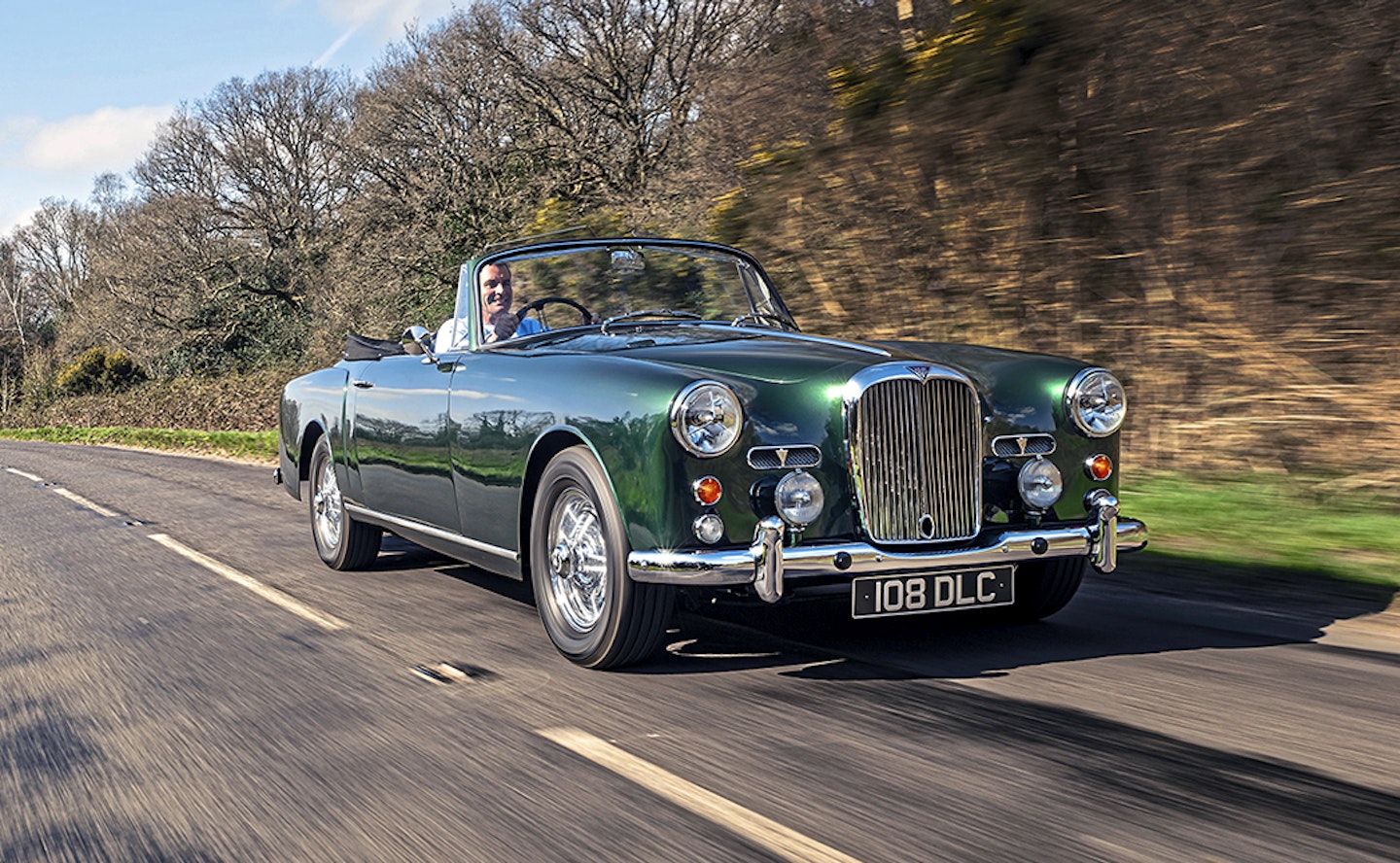
‘As you look through the windscreen you can see the lovely curves of the bonnet and the front wings’
His interest in the Alvis was piqued by seeing one up close a few years ago. ‘I remember seeing a red convertible from a distance, and I thought it looked interesting, and wondered what it was. When I got closer, I could see it was an Alvis and, wow, it did look good. Then the owner caught me looking at it and came and told me a bit more about it.’
Up close with this TD21 for the first time, Howard is stunned by how good it looks. ‘It’s in lovely, lovely condition,’ he says, taking in everything from the Lucas Tri-Bar headlamps to the neat rear light clusters, which it shares with the Aston Martin DB4. Triangular details pop up everywhere – at the bottom of the quarterlights, in the vents either side of the radiator grille, even in the bespoke wing nuts retaining the rocker cover. Howard is impressed by how many visible parts are exclusive to Alvis. ‘A lot of car companies would have bought in items like door handles – a standard part from Wilmot Breeden or whoever. But not on this car. Just look at that wonderful boot handle and the chrome strip it lines up with. That’s very classy.’
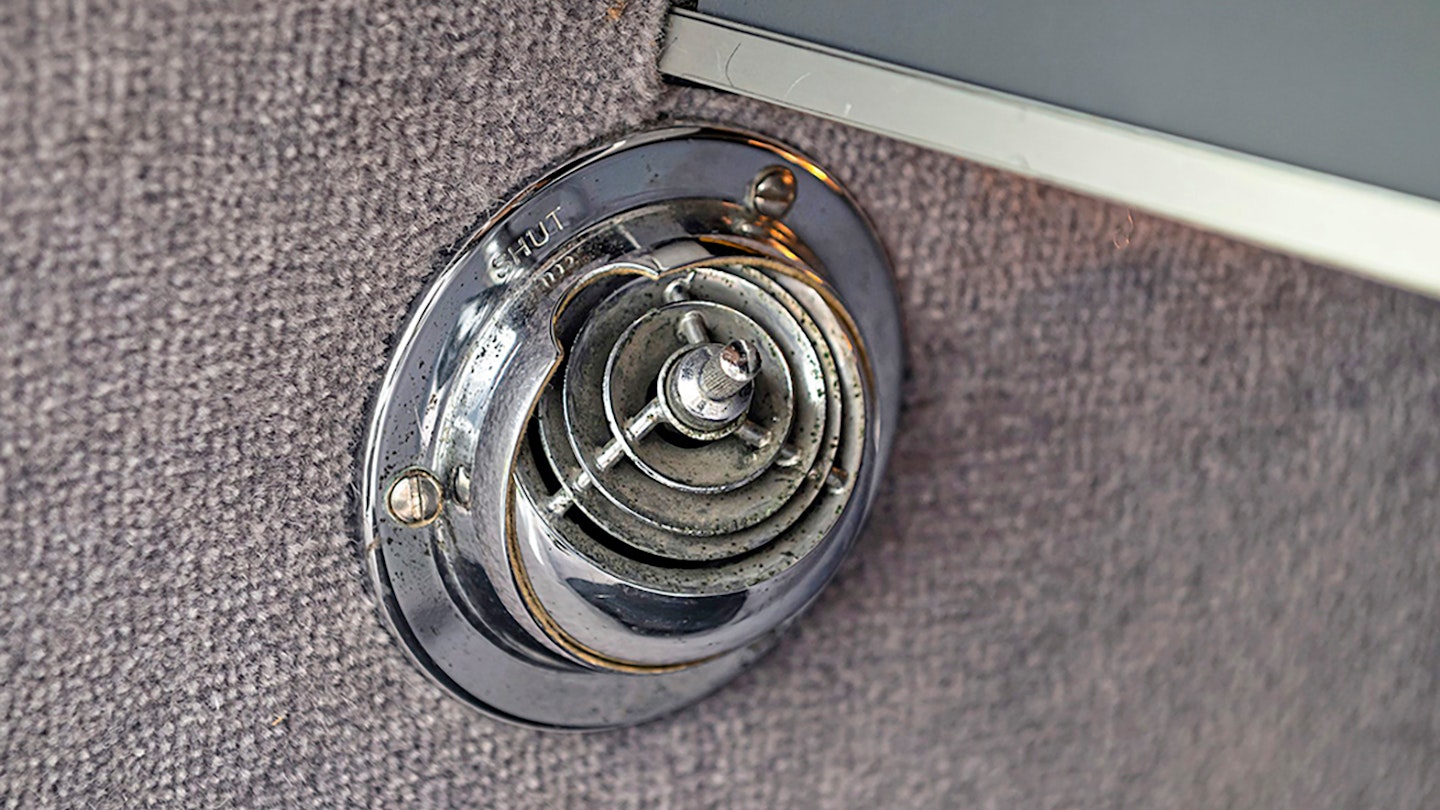
Even footwell heater vents are classy
Howard is particularly taken with the styling line that runs forward along the top of the rear wing and turns downwards just behind the door. ‘It adds definition to the side profile of the car,’ he says. ‘The stylists could have just carried the line all the way along the side but no, they turned it downwards to make it more of a feature. That sort of detail was typical of coachbuilder Graber, who created the original shape.’
Graber’s design was originally penned for the TC21 and was so successful Alvis bought the rights to it and used it to create a new model, the TC108G. Bodies were either built by Graber itself in Switzerland or by Willowbrook of Loughborough. A further development of that car, now with bodies built by Rolls-Royce coachbuilder Park Ward in Willesden, was introduced in 1958, with the designation of TD21.
Jason has owned his TD for a little over a year. ‘I’d always admired them,’ he tells us. ‘We wanted something with loads of room that we could use for a European tour – down to Le Mans and the south of France. Unlike a lot of classic cars, it’s quite nice when you’re cruising along on the motorway. At 70mph it’s quite comfortable. It’s a good all-rounder, really.’
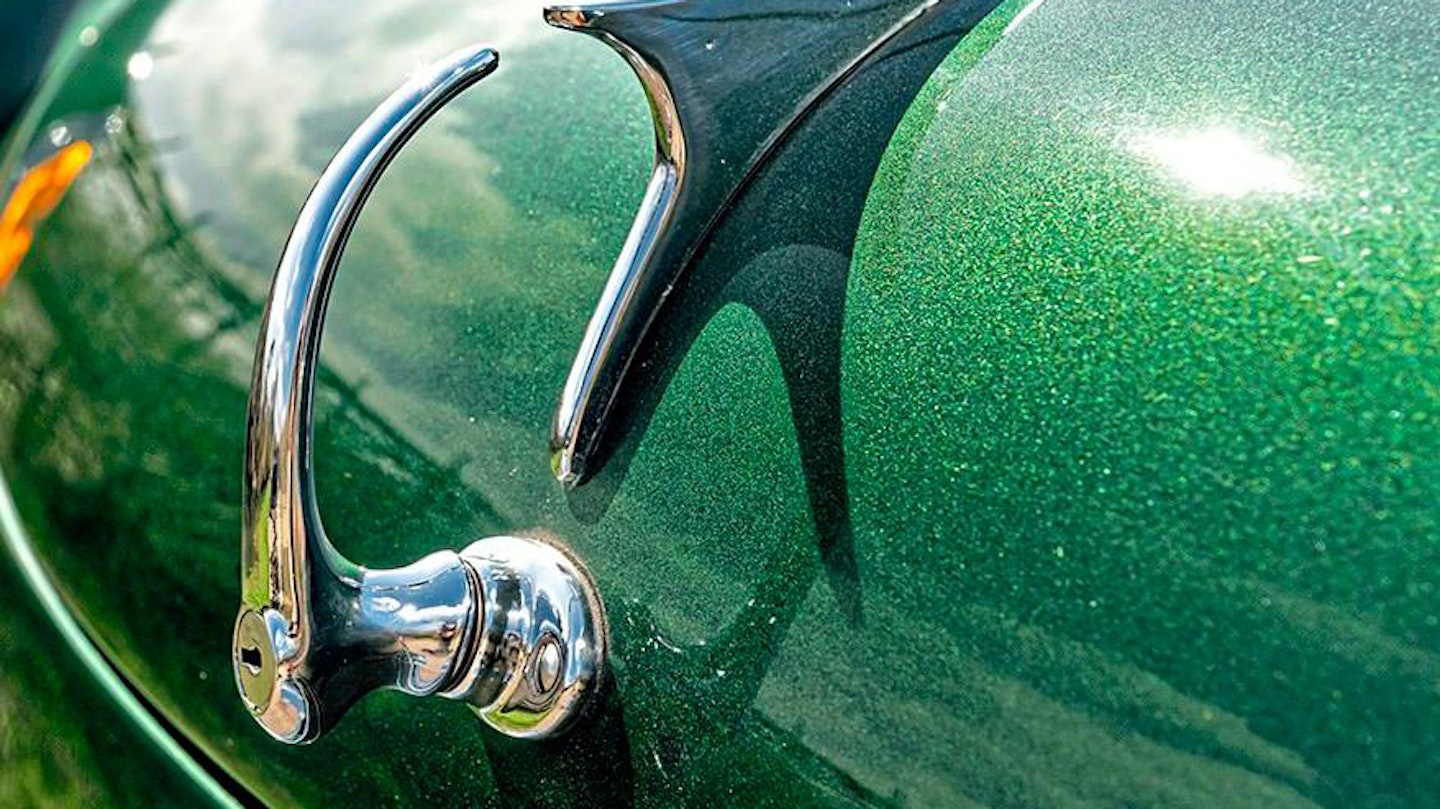
Bespoke and stylistic flourishes abound on TD21
This TD was sound, but Jason has put a lot of detail work into it since, including a swap from steel to wire wheels. ‘Changing the hubs was quite a job because they heat shrink them on,’ he says. He also refinished the dashboard panels and applied a leather treatment to restore the unusual pale blue interior to its former glory. Only around 170 TD21 dropheads were built from 1958 to 1963, when it was replaced by the TE21, with a four-headlamp front end and more power. This car must surely now be one of the best of the 50 TD21 dropheads still believed to exist.
That makes it ideal for Howard to get a feel for the Park Ward Alvis experience, following in the footsteps of TD owners like actor Tony Curtis, fighter pilot Douglas Bader and Prince Philip – who had his modified with a taller roof so he could wear his Ascot top hat in it. As Howard folds his 6ft-plus frame into the driving seat for the first time, it looks like he would ideally need to do a few modifications too. Rearward adjustment on the seat is limited – which avoids compromising leg room for any rear passengers but leaves him cramped for space up front.
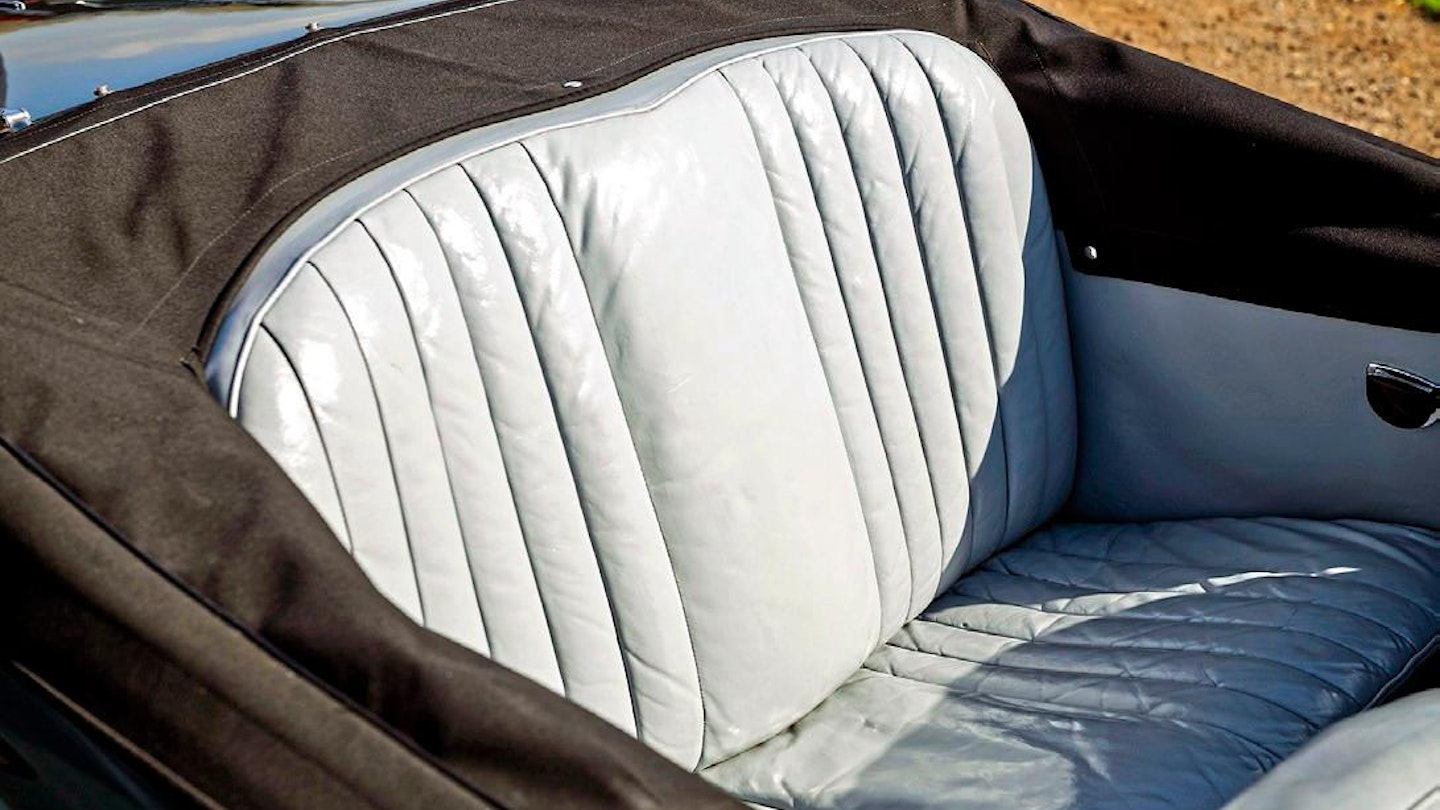
More accommodating in the rear than TC108G predecessor
‘Ideally I would like to have the seat further back,’ he admits, legs splayed on either side of the large-diameter steering wheel. ‘If the car was mine, I would remount the seats further back, which should be easy to do – they’re just screwed down into blocks of wood. I have the same problem in my MGB, but I’m so used to it I don’t really notice anymore.’
Despite the short-legged seating position, he is quickly settling into the Alvis. ‘The front seats are good, and it’s comfortable,’ he reports. ‘There’s an adjustment built-in for the recline of the seat back, but there’s not any knob or lever. It’s therefore a bit of a long job to get comfortable – you have to get a spanner out and turn a screw that limits the angle of the seat.’
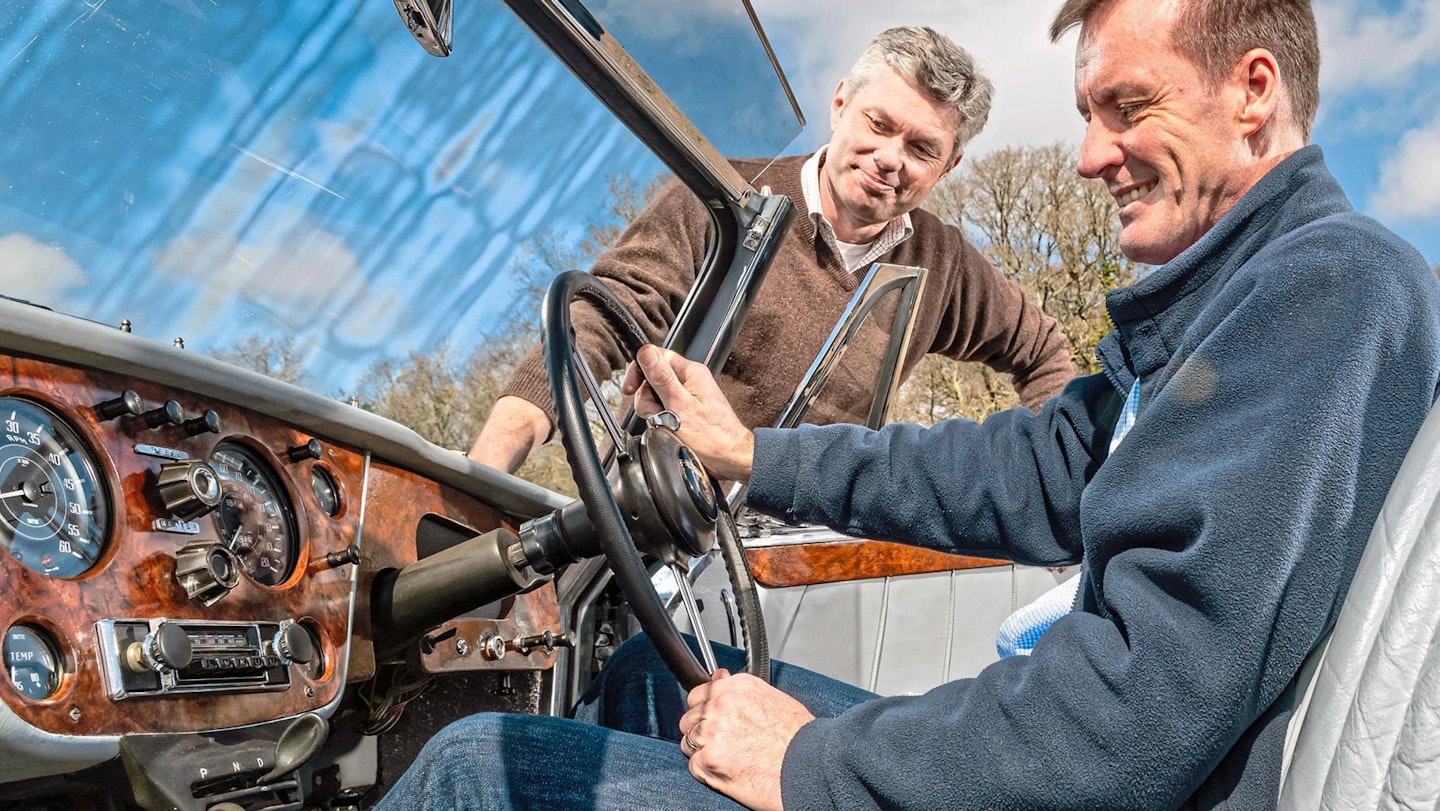
Howard (seated) finally enjoys Alvis experience
Howard is fascinated by some of the detailing inside, pointing to the ashtrays provided for all four passengers. ‘The ones either side of the rear seat are much cleaner than the ones in the front – I suppose they’ve rarely been used. The one in the driver’s door is close to your knee so you would have to be careful using it.’
There are fine details wherever you look. ‘The heater vents in the footwells are amazing,’ he says. ‘All chromed, and there’s a stalk to position it in any direction you want. It’s only a heater vent but you imagine what it must have cost to make that – it must be one of the most expensive parts on the car. It’s unique, handmade, special – you don’t see things like that in many cars.’
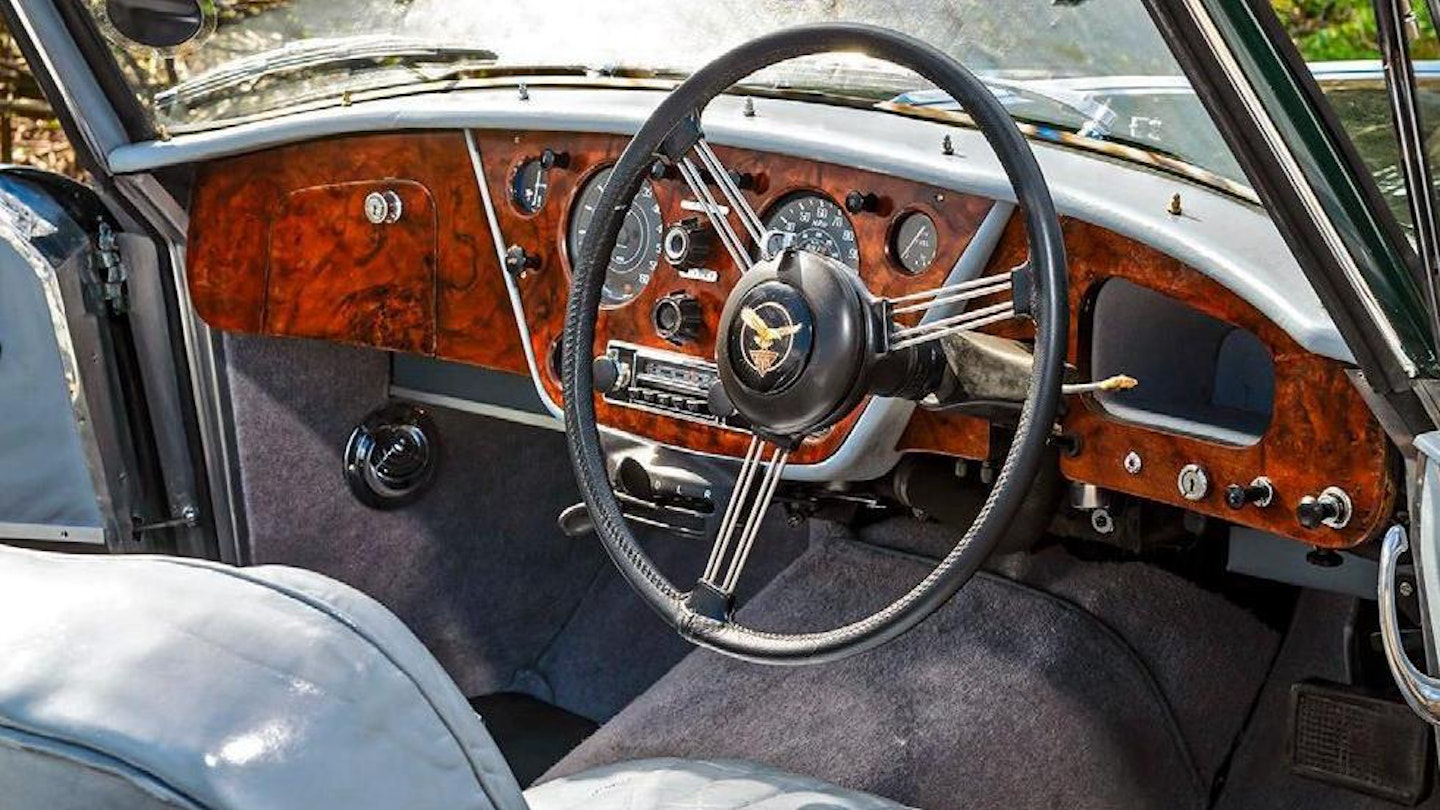
Steering weight is just right at speed, heavy when parking
Howard also points out the careful shaping of the cover that hides the roof when it’s folded down, and notes the tonneau cover fixings on top of the dash. ‘My MG has four of these – this has eight.’ The rear seat has a sculpted backrest to improve comfort, and the inside of each door is neatly finished with a stainless-steel trim. Quality and thoughtfulness abound.
Now properly installed in the driver’s seat, Howard is enjoying the view. ‘The dashboard is made of flat panels and it’s quite simple, but there’s a lot of it. There’s a lovely expanse of wood veneer, with these classic white-onblack Smiths dials in the old-fashioned position in the centre of the dash, and the rev-counter directly in front of the passenger. You’ve got this handsome wooden dash in front of you, and as you look out through the windscreen you can see the lovely curves of the bonnet, and the front wings. That’s great fun.’
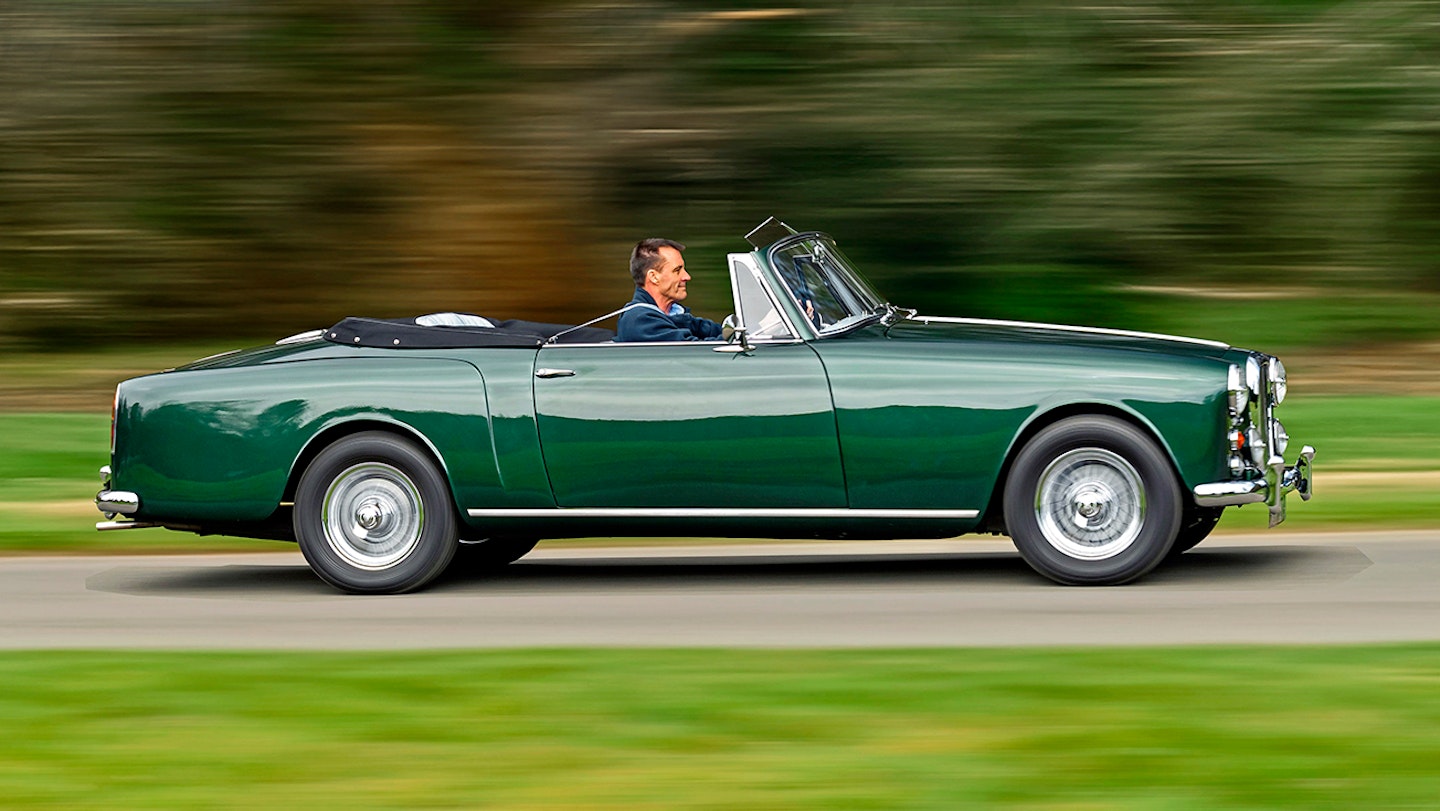
Jason talks Howard through the Alvis’ controls, which are very straightforward apart from the indicator switch, which is mounted on the steering wheel hub, and the novel horizontal slider under the dash which controls the automatic gearbox. A second slider below that selects one of three driving modes. ‘You’ve got economy, standard and sport,’ says Jason. ‘It changes the gearchange points and the fuelling. Douglas Bader said in an interview once that the sport mode made his Alvis sound like a Spitfire. It doesn’t quite, but if you listen carefully, you can understand a little of what he was getting at.’
The engine of the TD is a development of the seven-bearing, 3.0-litre straight-six first seen in the TA21 of 1950. On poor quality post-war fuel it delivered just 85bhp, but that was up to 115bhp in the TD. ‘The engine has a nice sound when you pull away,’ Howard reports. ‘There’s a musicality to it, the sort of thing you only seem to get from a straight-six engine. And it does its best work in the middle of the rev range.’
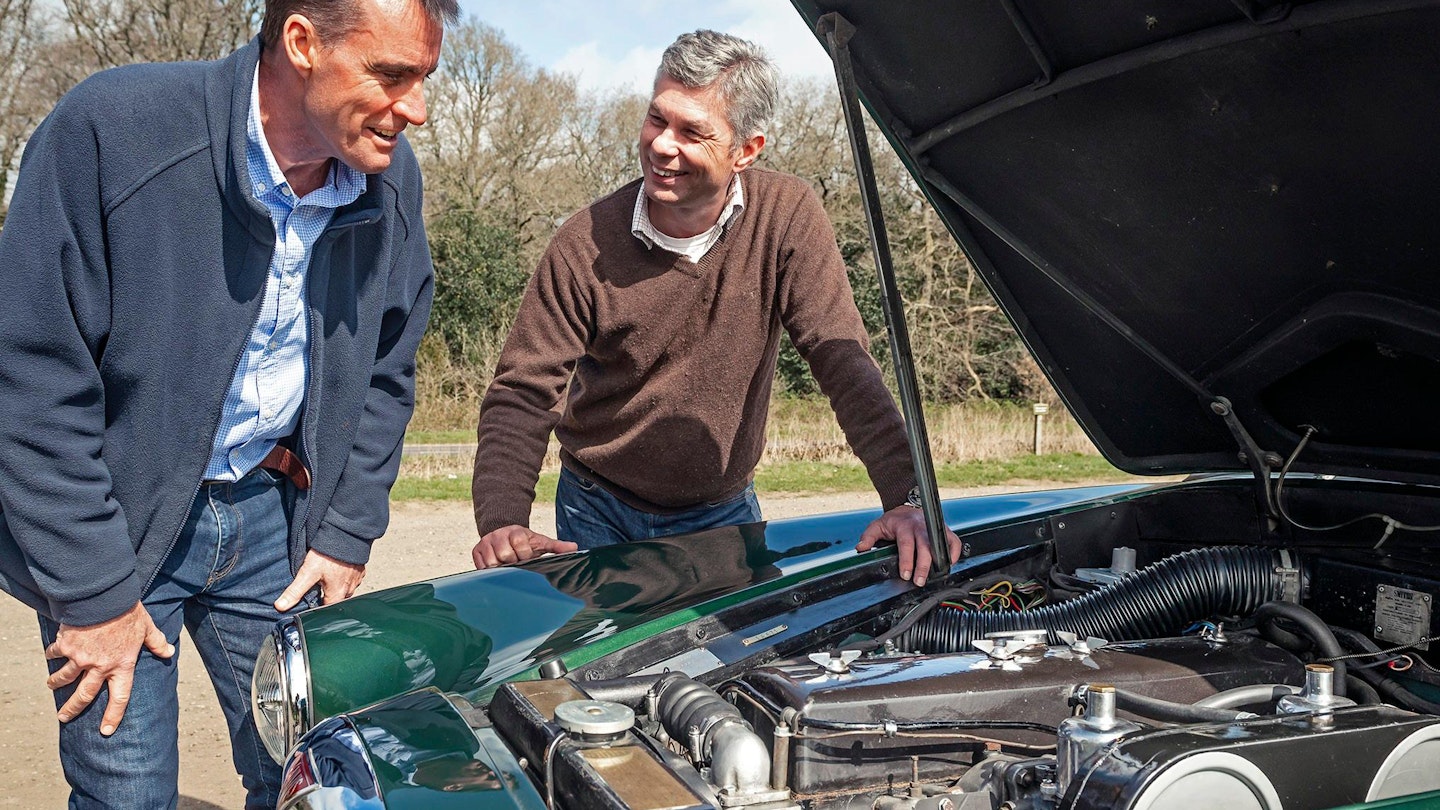
Straight-six has 3.0-litre capacity, good for 115bhp
The Borg-Warner-made three-speed automatic transmission suits the car well. ‘With the manual gearbox it’s probably a bit livelier, but for a car of this sort I’d go with the automatic. The sport mode makes a little bit of difference, but it doesn’t make it quick.’
The unassisted steering, predictably, is quite a handful when manoeuvring.
‘I’m getting a bit of the workout,’ Howard says. ‘When you’re going along it’s OK, but when you’re parking it’s hard work. It’s got to be moving, and then the weighting is perfect. You would get used to it, or you could perhaps add electrical assistance – the great thing about those systems is that they make parking a lot easier but switch off at speed, so the steering feel on the open road is the same as in a standard car.’
The Alvis is too big and too softly sprung to be happy hustling down country lanes. ‘It’s not that sort of car,’ Howard says. ‘It’s really an A-road cruiser. It’s a soft, comfortable, smooth sort of experience. I could drive it all day. The closest car I’ve owned – though it’s different because of the engine – would be the Jensen Interceptor. If the Alvis were mine, I would take it to France, drive it through mid-Wales, or do the North Coast 500 in it. My wife wanted to do that in our modern Lexus because it’s more comfortable than my MG or Stag, so perhaps I need an Alvis.’
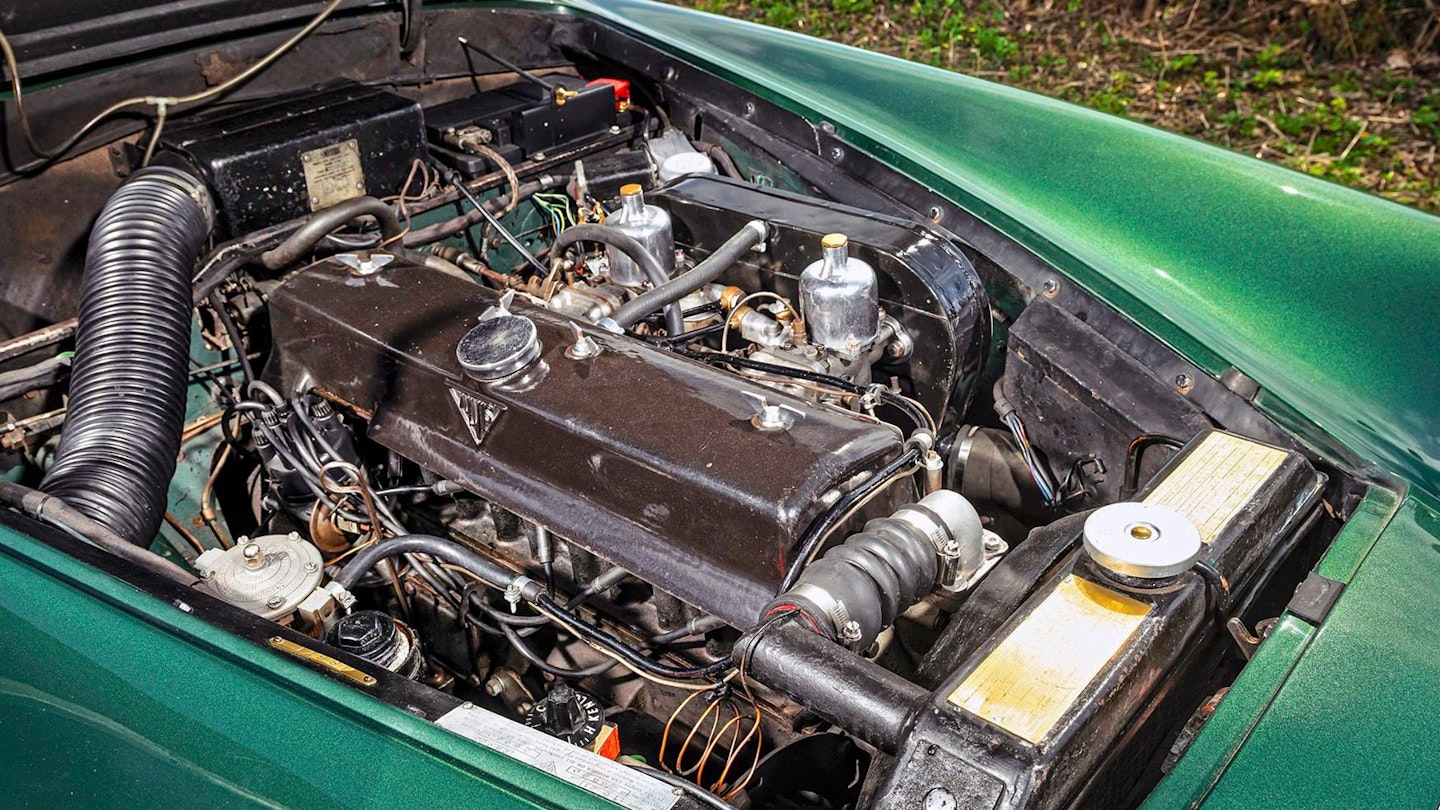
Mid-rev-range is when melodic engine is best
‘There’s a musicality to the engine, the sort of thing you only seem to get from a straight-six’
Although Howard owns two classic convertibles, his dream TD21 would probably have a roof. ‘I think ideally I would go for the coupé,’ he says. ‘The fact that I would be saving probably the best part of £50,000 by going for the hard-top car wouldn’t hurt, either – they’re much more attainable. It’s looks great in this colour, but I think it would really suit a light blue.’
Howard is warming to the idea of actually adding an Alvis to his fleet. ‘I could swap it for my Stag,’ he muses. ‘You can get three people in that, not really four. This would be much more comfortable. It also has a decent-size boot. For a long trip there would be enough room for my wife’s suitcases,’ Howard says, before adding, ‘I’m not sure what I would do with mine, though.’
The Alvis has done more than enough to maintain its place on Howard’s list of dream drive classics. ‘It’s smooth, comfortable, bespoke, high quality, and handbuilt – all the classic things,’ he says. ‘That’s why it holds such an appeal. I’d probably prefer the coupé, but then again, the more I’ve driven this convertible the more I have liked and enjoyed it, and on a sunny day like today it’s just ideal. Maybe I need a coupé fitted with a big sunroof. But really, either would do, wouldn’t it?’
1962 Alvis TD21 drophead coupé
Engine 2993cc in-line six, ohv, two SU HD6 carburettors
Power and torque 115bhp @ 4000rpm; 152lb ft @ 2500rpm
Transmission Three-speed automatic, rear-wheel drive
Steering Burman recirculating ball
Suspension Front: independent, double wishbones, coil springs, telescopic dampers, anti-roll bar. Rear: live axle, leaf springs, telescopic dampers
Brakes Front: discs; Rear: drums. Servo-assisted
Performance Top speed: 102mph; 0-60mph: 17sec
Weight 1588kg (3500lb)
Fuel consumption 20mpg
Cost new £3012 (1962)
Classic Cars Price Guide £32,000-£80,000 (TD21 convertible; £12,500-£30,500 for TD21)s
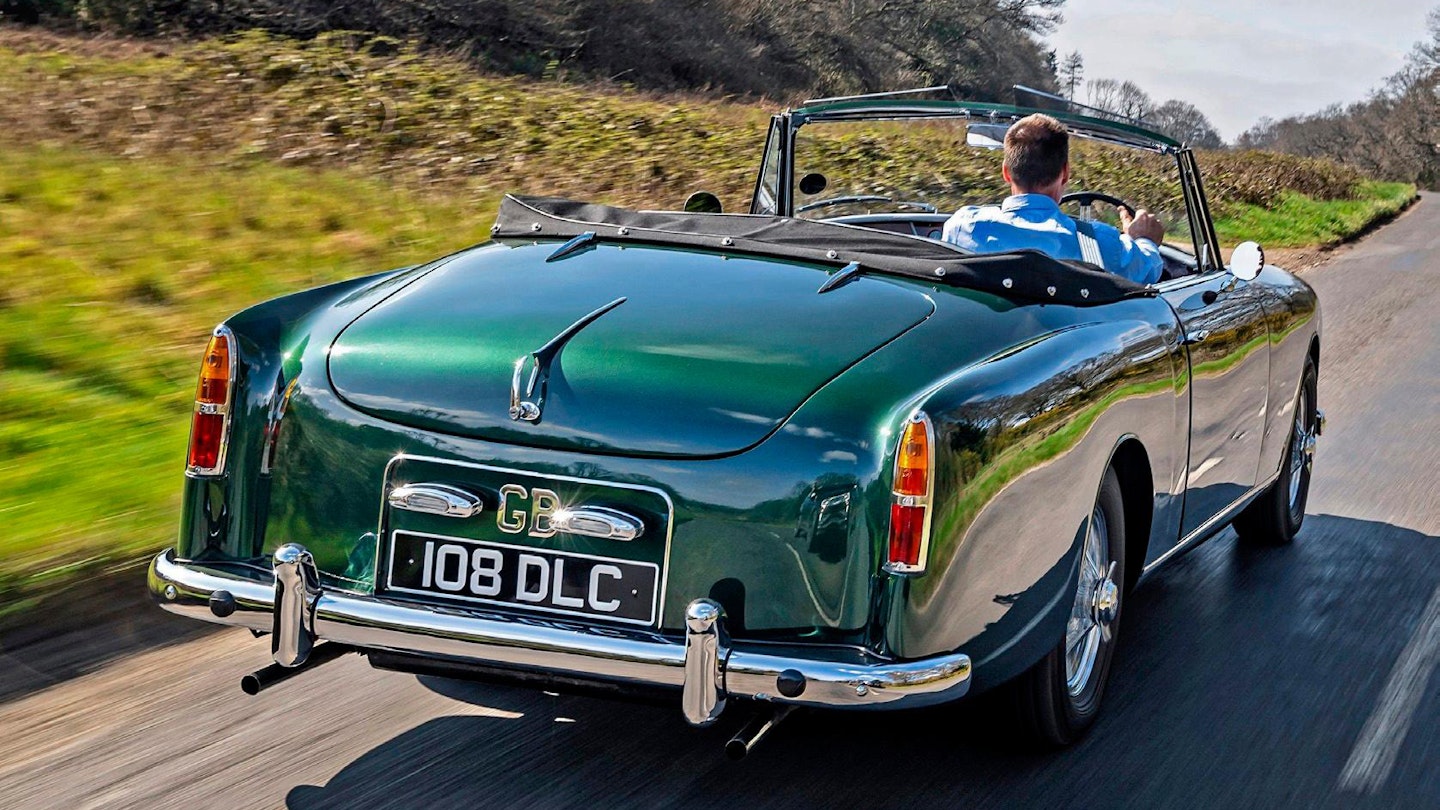
Both smooth and comfortable, Alvis ideal for cruising
HOWARD CHICK’S TOP TEN

Bristol 411
‘I have long admired the handmade British build and unusual Bristol features.’
Jaguar E-type
‘Just beautiful, fast, and in its day, it was great value compared to other exotic cars.’
Bentley Continental Fastback
‘Class, comfort, and what a presence it would have anywhere.’
Jensen FF
‘Unusual and rare, with four-wheel drive and those looks – fantastic.’
Aston Martin DB6
‘The flash fast gentleman's car, quality with style and panache.’
Jaguar XK150 coupé
‘Just a stunning coupé shape with lots of character.’
Mercedes-Benz SL R107
‘German engineering at its best, with quality and comfort.’
MGA Roadster
‘Another beautiful British classic with which lots of fun can be had, even at lower speeds.’
Lotus Elise
‘For pure and quick driving fun, the Lotus Elise has to be top of the pile, although it’s perhaps not as luxurious as the others.’
Alvis TD21
‘I like rare coupé cars and the Alvis fits that wish very well.’
HOWARD CHICK’S CAR CV
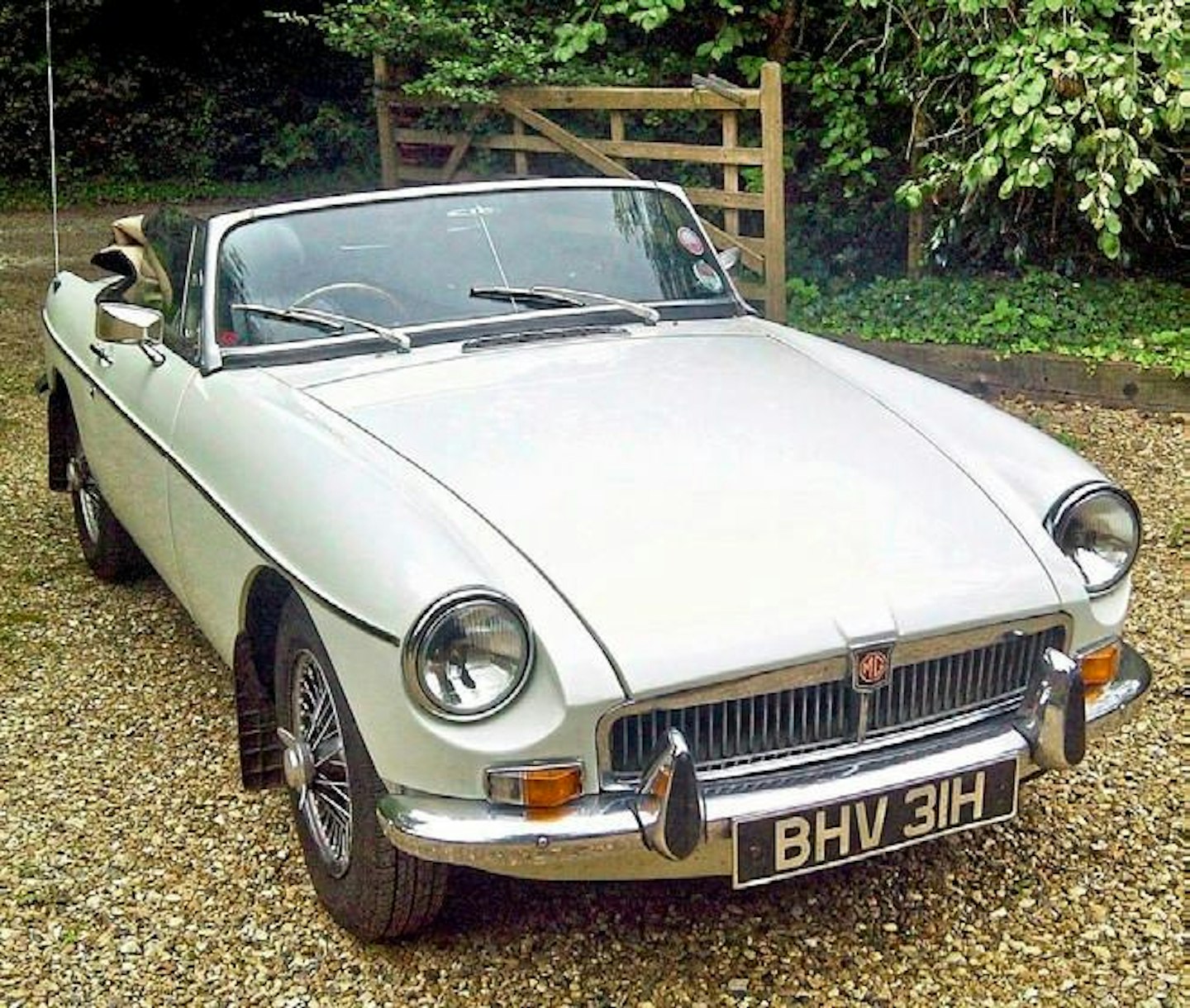
1970 MGB ROADSTER
‘The first car I ever bought, and still the car I’ve had the most fun in. I still have it.’
1990 OPEL MANTA GT
‘White with twin headlights ,and this was my first company car, it was cool!’
1996 AUDI 2.6 COUPÉ
‘Bought new, pearlescent blue and nearly half the cost of an S2 which I would have loved.’
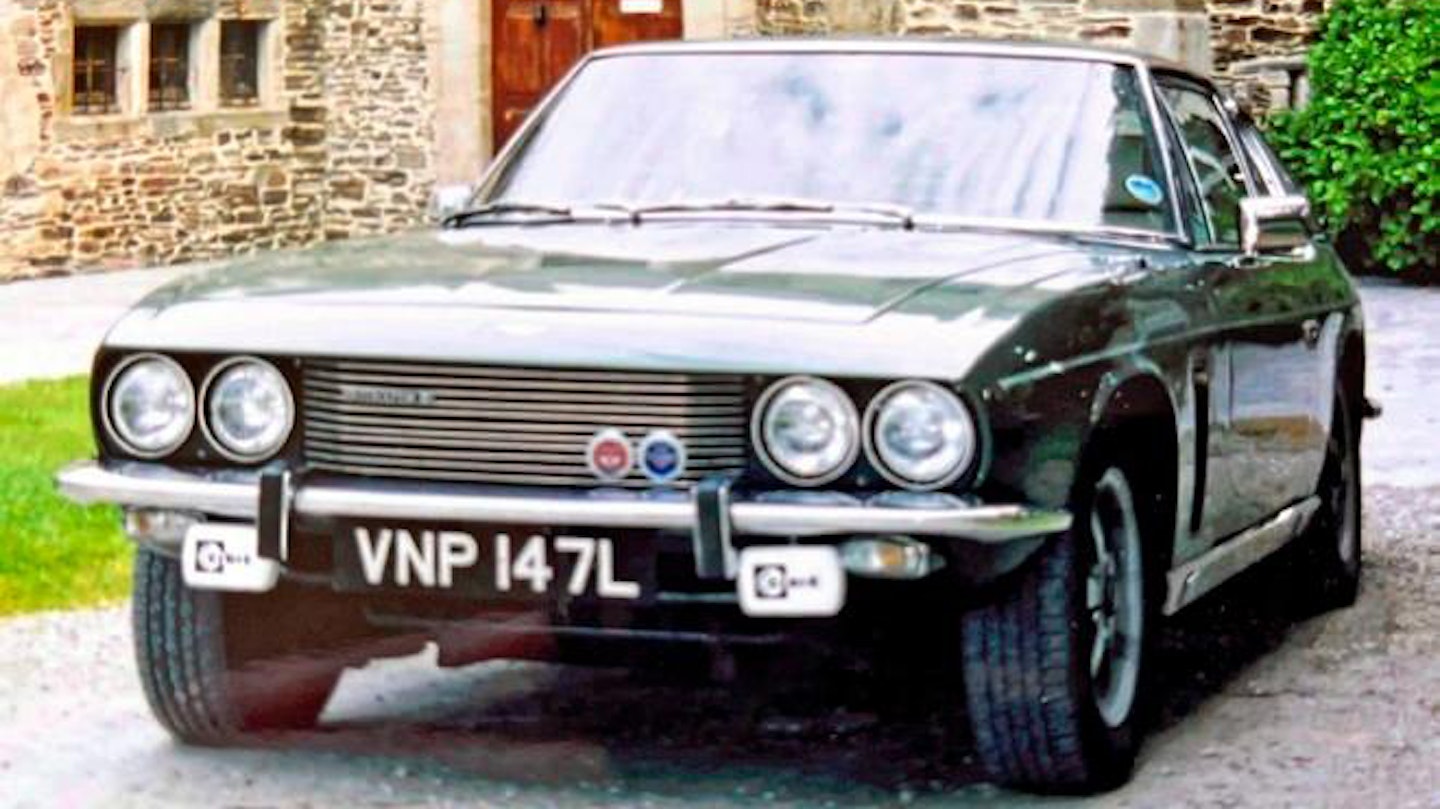
1973 JENSEN INTERCEPTOR MKIII
‘I gave a friend a ride in it, and he said it was the fastest armchair he’d ever been in.’
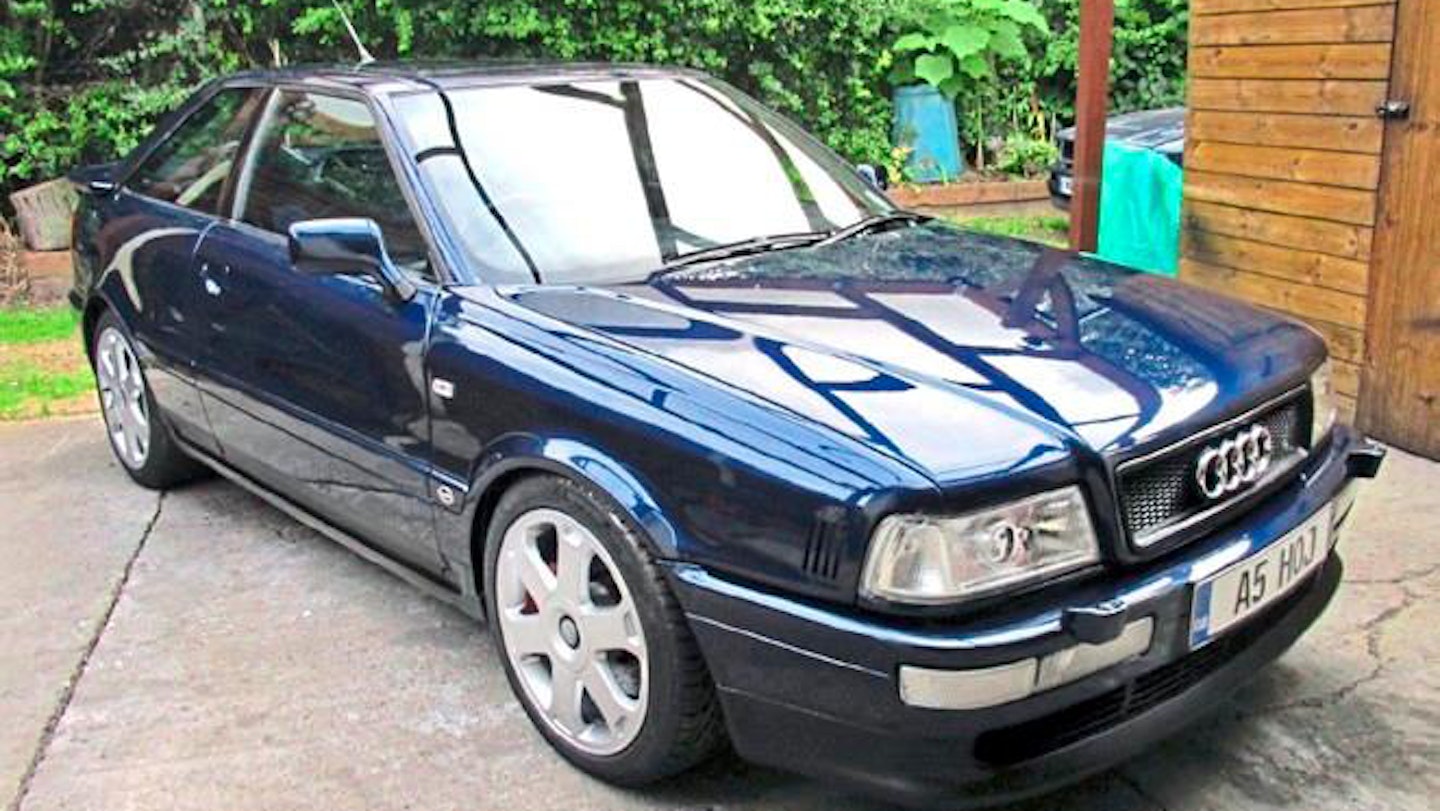
1995 AUDI S2 COUPÉ
‘Another dream car; blue, fast and comfortable, very understated and my current daily driver.’

1972 TRIUMPH STAG
‘I’ve restored this and yes, I have moved the seat back! It’s fun both down the lanes and cruising. Another car I still have.’
[Want a Drive?]
Classic Cars will make a dream drive happen for one reader in every issue. Send us your list of the ten cars you’d most want to drive and why, along with a CV of the classic cars you’ve owned to thelist@classiccarsmagazine.co.uk. Be prepared for the photoshoot glamour of an early start and a long drive to get there.
NEXT MONTH: MINI COOPER
Subscribe to Classic Cars today. Choose a Print+ Subscription and you'll get instant digital access and so much more. PLUS FREE UK delivery.
